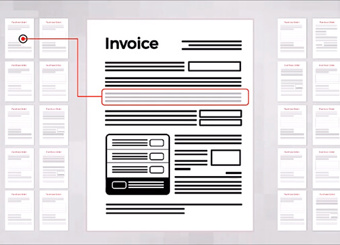AP processes: returning to the back office from remote work - post quarantine
For years people will discuss the ramifications of COVID-19 in 2020. Quarantining meant companies were compelled to support a remote workforce to keep their doors open for business. Organizations with manual AP processes or partial automation scrambled to automate so remote workers could collaborate in a secure environment from any device and location. AP automation proved to be faster and more efficient than outdated manual processes, which require an office location, paperwork, and human resources.
A new normal commenced during the spring and summer of 2020. People grew accustomed to working remotely and collaborating in the cloud to remain productive. As the global pandemic comes to a close in 2021, companies reopen their doors and prepare to transition once again from remote work. What will the next new normal look like for international organizations? Consider how to seamlessly transition from working remotely to an office setting - with the advantages of automation.
Rewind to April 2020
During the quarantine, offices dependent on paperwork and manual processes soon realized they were left with minimal options. As a result, companies risked falling behind on payments and invoice management. Companies with AP automation seamlessly transitioned from an office setting to remote work with cloud collaboration on everything from invoice receipt all the way to pay updates in real-time. On the other hand, organizations without end-to-end automation rushed to support a remote workforce and remain productive - at the risk of being forced to close their doors if they could not continue production. One such example was the AP manager leaving blank checks on the front porch of her home residence so the CFO could drive by and sign for necessary payments.
As the remote team returns to the office, companies have an opportunity to review changes make quickly to ensure work continued during the pandemic. Use key performance indicators (KPIs) to determine where improvements should be made to support the evolving work climate - likely with some people working in the office and others remotely.
Slowly Emerge
An unpredictable pandemic means uncertainty about opening offices, requirements for social distancing, and when it is safe to reopen businesses fully. The risk of further shutdowns from variant spread furthers that uncertainty. As people slowly emerge and attempt a newer normal, AP automation supports in-house staff members and the remote workforce, crucial as companies become more active.
Plus, many vendors were switched to ACH payments in earnest due to office closures and remote work. According to NACHA, ACH payments to vendors increased 11 percent in 2020. New ACH processes are heavy lifts, especially regarding security, which kept paper around far longer than necessary for many organizations. The recent developments in holistic invoice-through-payment automation help combat that lift, putting the work on the solution provider and covering all rails of payments, including check, ACH, and card formats. The importance of end-to-end AP automation is evident post-pandemic for real-time collaboration and payments; whether workers are at the office or working remotely - everyone will always be on the same page.
The Back Office Will Never Look the Same
Remote work offers many benefits for employers and workers, which many organizations discovered during the pandemic. The benefits of remote work for employers include maintaining less office and storage space, paying lower utility bills, and reduced costs for equipment. Plus, employers attract more qualified team members by offering remote work. Access to a larger talent pool is a benefit for accounts payable, where talent shortages often exist.
Many employees, especially since the pandemic, prefer remote work because of its flexibility. Integrating life and work responsibilities is more manageable when working remotely. Plus, remote team members save time and money on commuting and getting dressed for work. In addition, a growing number of millennials demand a remote work option to support their busy lifestyles and familiarity with technology - which means AP automation is crucial to attracting fresh talent.
Heading Toward a New Normal
After the pandemic, businesses need to bring in tech partners to completely automate the payment workflow and address security and fraud risks associated with ACH payments - which will inevitably increase again in 2021. Preparation for the days ahead ensures companies remain productive and profitable, regardless of national or international conditions.
Consider the need to be resilient in a remote work world through intelligent AP automation and integration. Eliminating all tedious and time-consuming manual processes supports the newer normal. The combination of working in the office and remotely is here to stay, and companies that work remotely have the ability to face any circumstance. From a pandemic to natural disasters, AP automation solutions mean minimal interruptions and costs.
AP automation means the accounts payable team emerges from the back office once and for all - a benefit for everyone. Whether working in-office or remotely, the AP team has more time and resources for bottom-line boosting tasks, such as negotiating discounts for early payments. In addition, as everyone returns to work after the pandemic, automation and remote work are here to stay to help companies remain competitive and profitable through any challenge.






